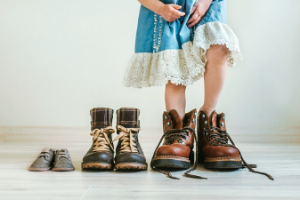When buying shoes for your child, it is crucial to buy the correct size. To do this, you need to know your child’s foot length. To determine this, take out the shoe’s insole and stand your child on it to measure the length. But remember that every child’s foot is different, and you know your child better than anyone else. For example, if your child can’t tie their shoes, it would be best to purchase laceless shoes or Velcro mock-laced shoes.
Size chart for kids’ shoes
 When shopping for your children’s shoes at https://spendless.co.nz/shop-categories/kids.html, selecting the proper size is vital. Kids’ feet grow quickly, so finding a pair that fits properly is crucial. Children’s shoe size charts are an excellent tool for finding the right fit for your child. They offer a detailed look at international and metric measurements and conversions to ensure the perfect fit.
When shopping for your children’s shoes at https://spendless.co.nz/shop-categories/kids.html, selecting the proper size is vital. Kids’ feet grow quickly, so finding a pair that fits properly is crucial. Children’s shoe size charts are an excellent tool for finding the right fit for your child. They offer a detailed look at international and metric measurements and conversions to ensure the perfect fit.
Choosing the correct size for your child’s shoes is essential since they can get too large and impede their walking and playing. Fortunately, several online resources offer helpful information on choosing the correct shoe size. In addition, using a printable guide or tracing technique, you can also measure your child’s foot at home.
The best way to determine your child’s shoe size is to measure both feet. To help make sure your child wears a proper shoe, measure the width of the thumb between the back and the heel of the shoe. It will ensure the shoe is snug but not too tight. Also, make sure that the shoe is supportive and comfortable.
You can also compare kids’ shoe sizes with men’s shoe sizes. Men’s shoe sizes begin at size 6.5, and girls’ shoes begin at size 7. These charts for boys and girls will help you decide what size to buy. There is also youth shoe sizing mats to help you understand a starting point.
Kids’ shoe size ranges from 0 (for newborns) to seven (for the biggest kids). Some brands mark their toddler sizes with a “T” (for toddlers) and their other sizes as “Kids.”
Fit
Choosing the right kids shoes is crucial for your child’s foot development and comfort. The wrong size and shape of shoes can lead to various problems, including deformities and delayed walking. Proper fitting of kids shoes is also crucial, as wearing improperly fitting shoes can lead to blisters and calluses.
When choosing a children’s shoe, the first thing to remember is to measure the width of the longest toe. Then, choose closed-toe athletic shoes that have arch support. Next, look for rubber soles, as these reduce the fall risk. Also, look for children’s shoes with leather lining, as this is a good material for children’s footwear.
In terms of ergonomics, children’s shoes should be flexible. The front third of the toe area should be able to bend and flex. The heel should be high enough to support the back of the foot arch and heel. The heel height should be between five to seven millimetres.
Children’s shoes should be comfortable and supportive but must also have a protective function. Kids’ shoes should not aggravate any existing gait or posture problems. A child’s feet are much more sensitive than an adult’s, and even slight pressure can deform a foot and cause a permanent problem.
In addition, children’s footwear should accommodate the feet of children of all sizes. Researchers have begun to study how kids’ shoes fit, including the toe allowance. A study in the Journal of Orthopedic Research and Analysis (JJRA) reveals that children’s footwear can help children grow and develop properly.
Studies have also examined the biomechanical effects of children’s footwear. According to Caleb Wegener, “The function of kids’ footwear influences the gait of children.” Children’s shoes improve the support phases of the gait cycle while decreasing the swing phase leg speed. They also attenuate some shock and encourage rearfoot striking.